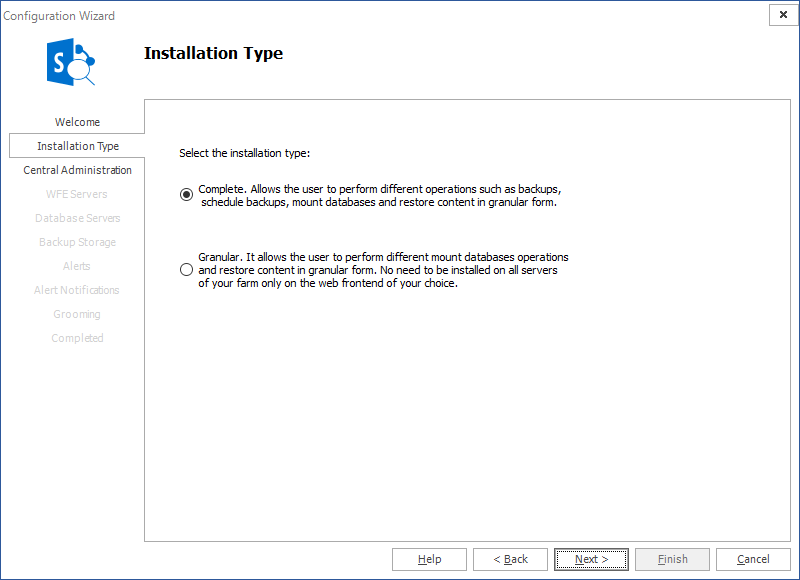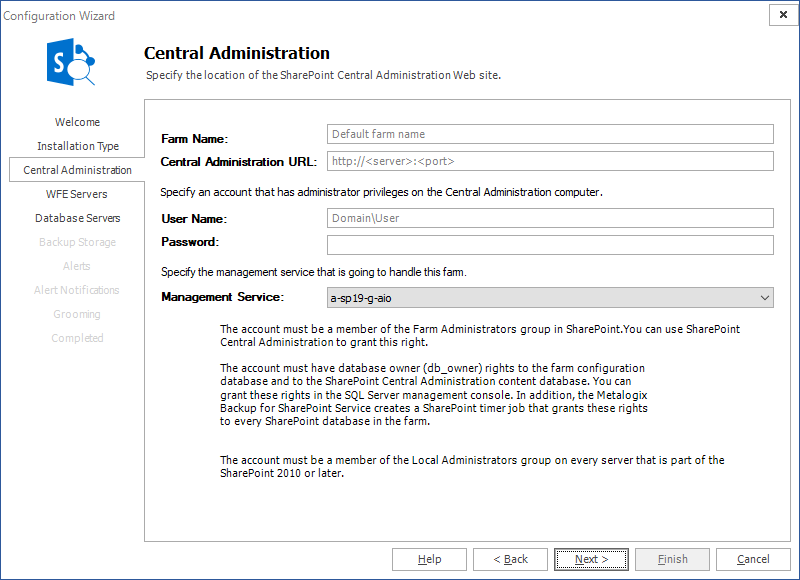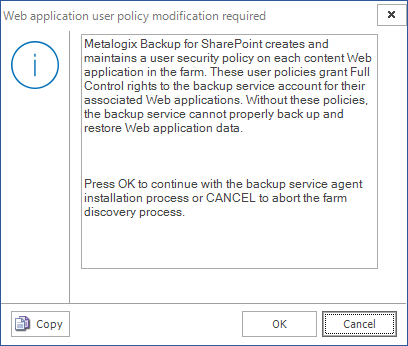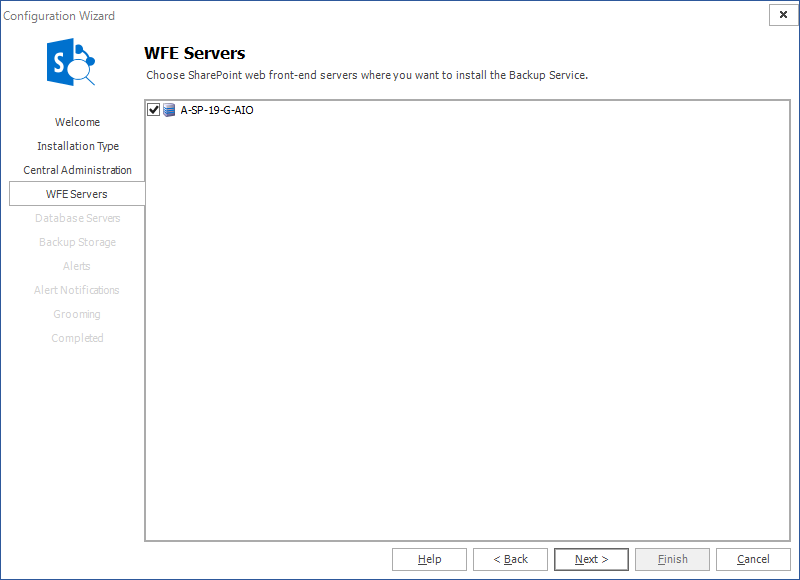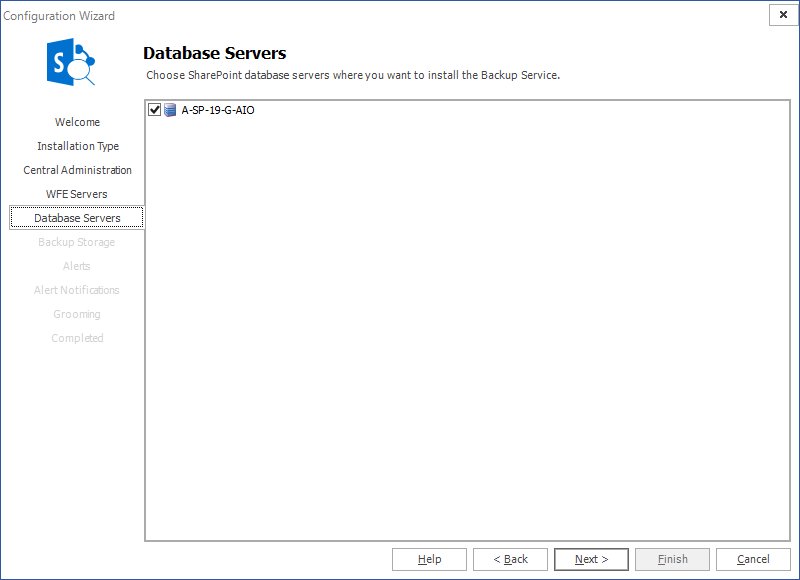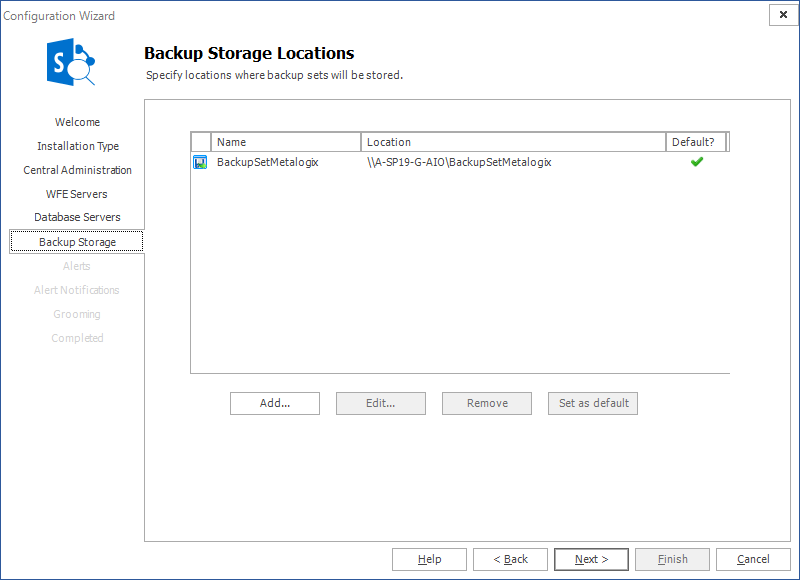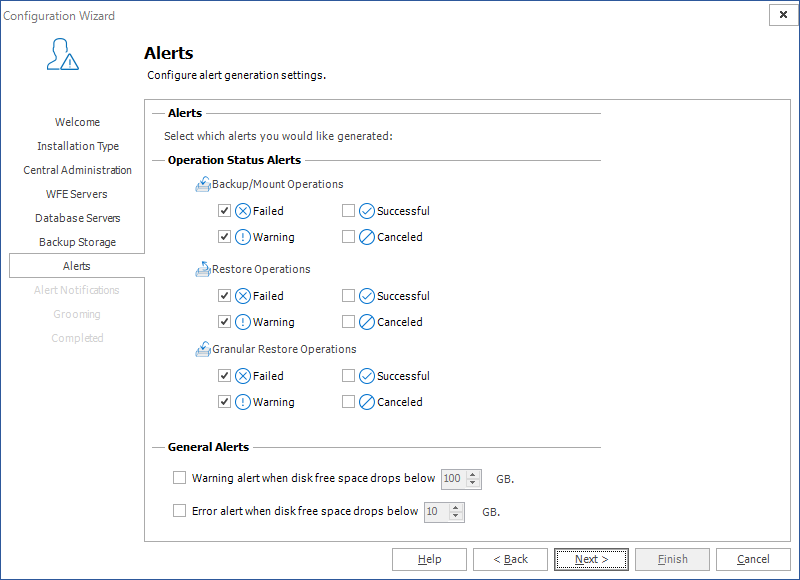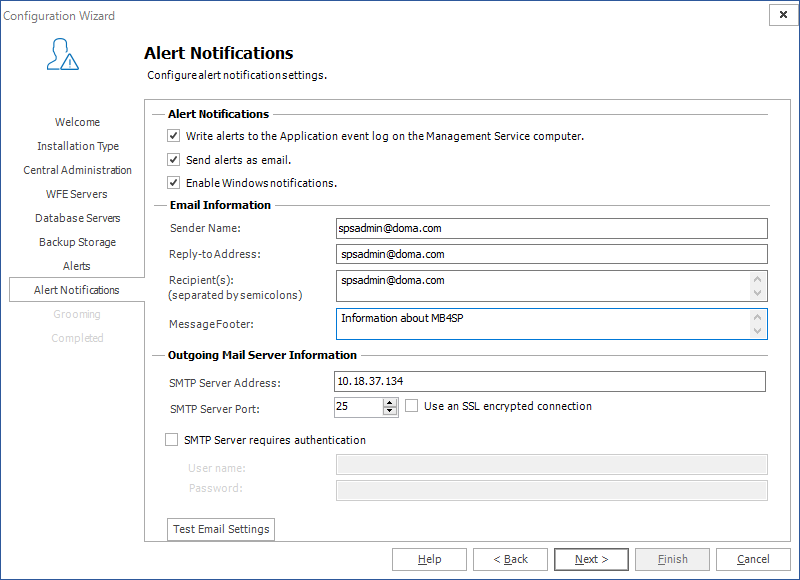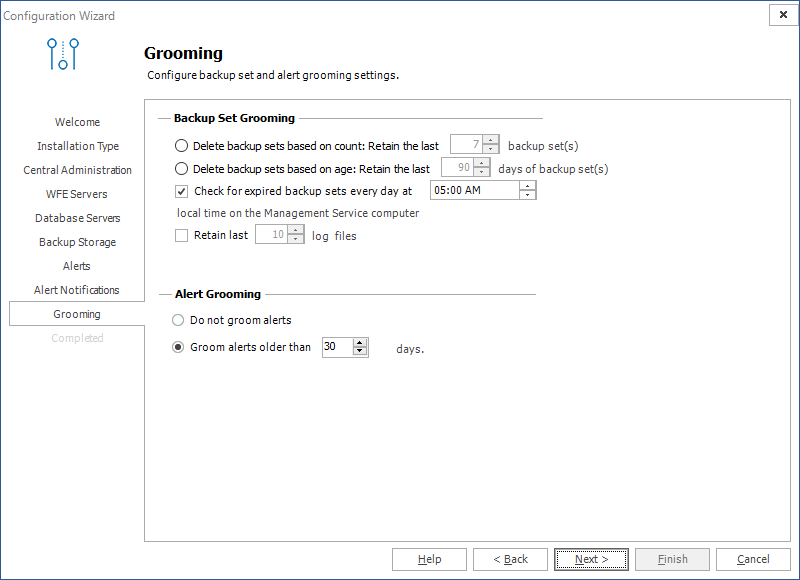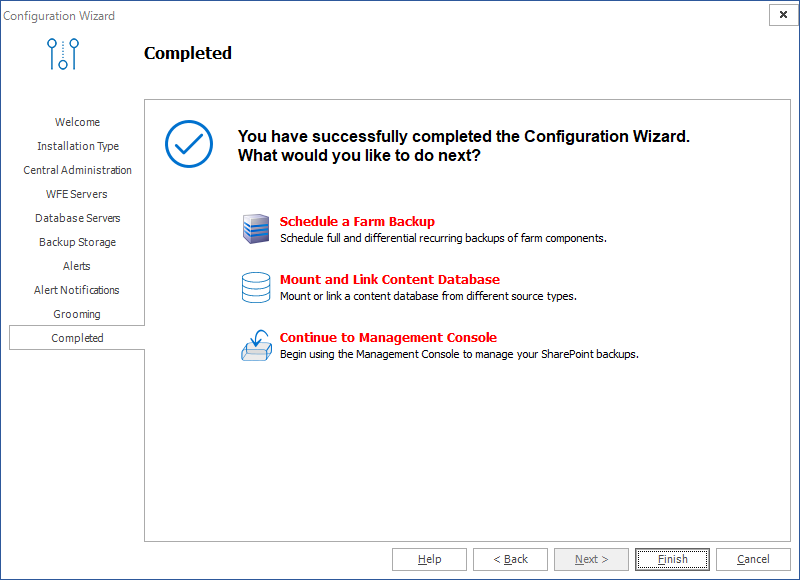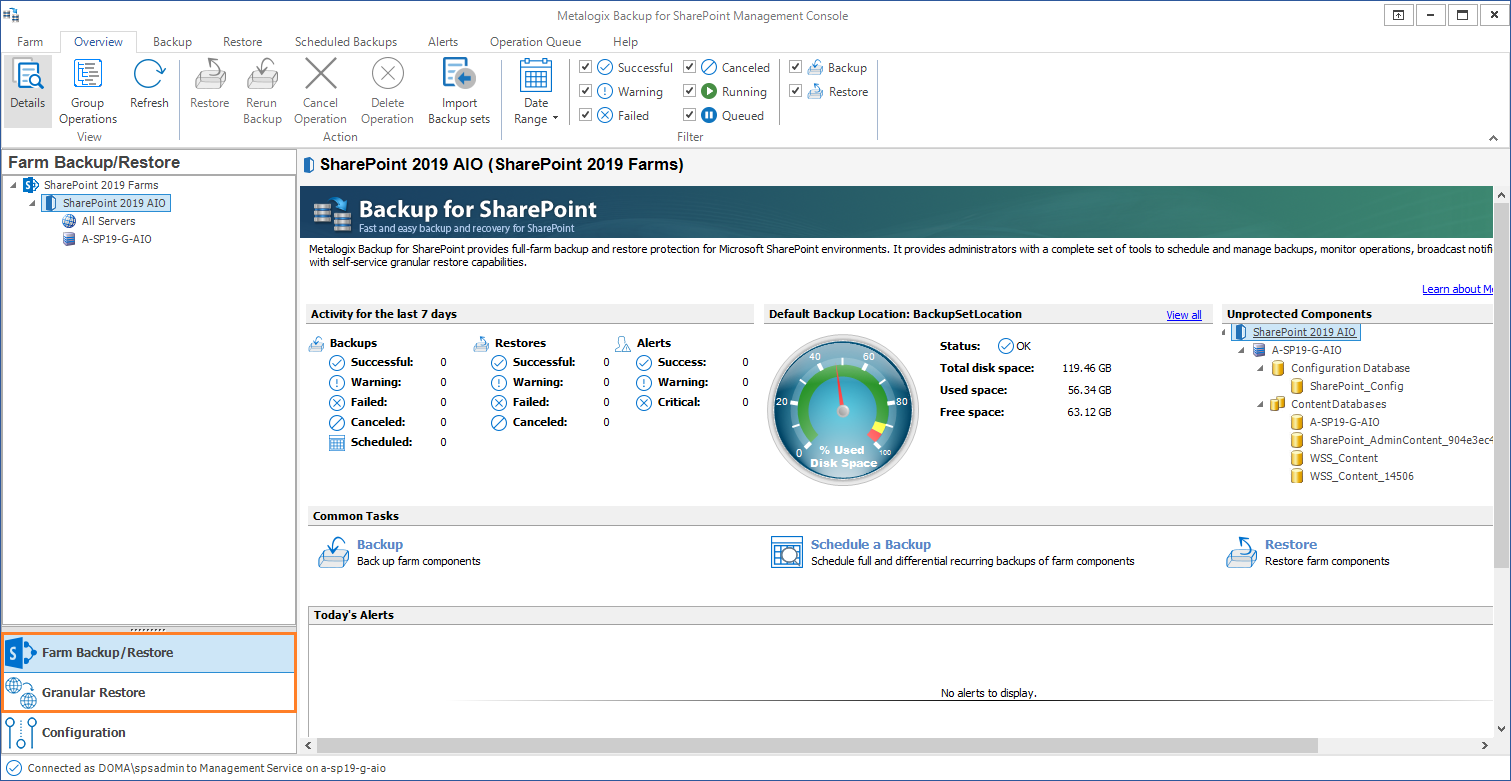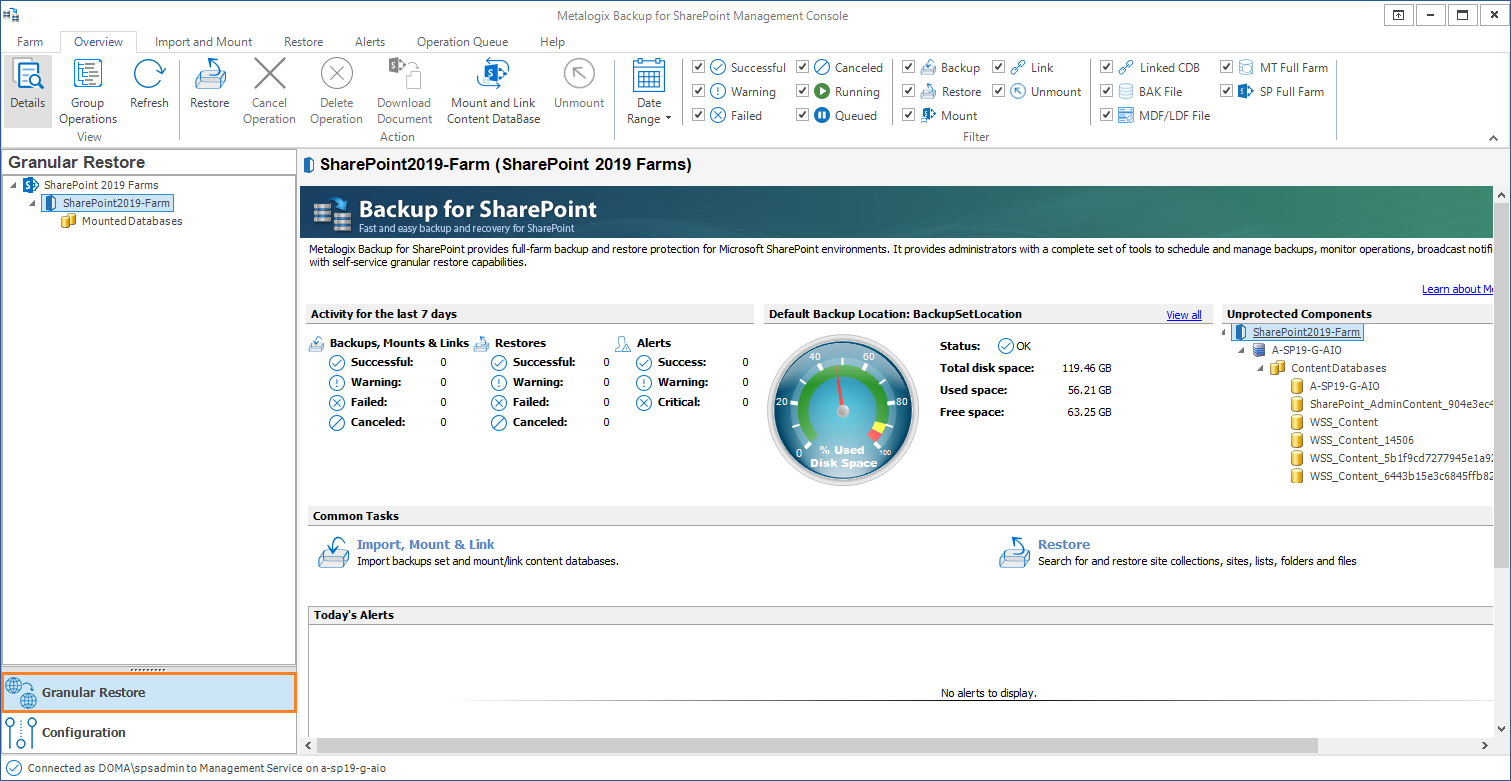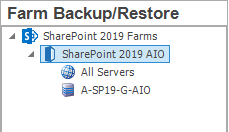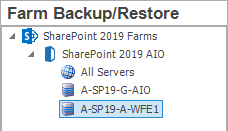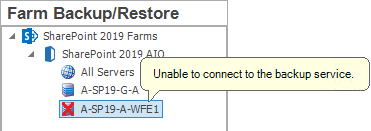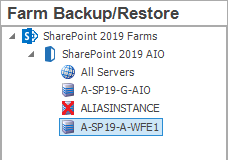Adding a farm
You can add any SharePoint farm to the Management Console. You must add a farm to back up the farm or the SharePoint objects that it contains. When a farm is added, the farm is registered in the Repository database.
When you add a farm, you supply credentials to connect to the Management Service for the farm. If the farm has one or more installed Backup Service instances, you also connect to the Backup Service. If the farm does not have an installed Backup Service, you can use the Configuration wizard to install one or more Backup Service instances. For more information about using the Configuration wizard, see Discovering SharePoint Servers and defining preferences.
Steps to add a farm
1.From the Management Console toolbar click Farm > Add Farm. The Configuration Wizard opens.
or select the root node from the SharePoint farms pane. Then right-click and select Add Farm from the context menu.
2.Click Next. Select the Installation Type.
3.Click Next. If you selected the Complete option, the Central Administration window appears.
a.In the Central Administration page of the Configuration wizard, give your farm a name.
b. Enter the URL of the Central Administration site for the SharePoint farm in the Central Administration URL field.
c.Type the name and password of the account that Metalogix Backup for SharePoint should use to connect to the Management Service for the farm in the User Name and Password fields.
d.Select the Management Service that will manage the farm that will be added. Click Next.
e.In the Web application user policy modification required window, click OK.
4.Click Next. The WFE Servers window appears. Choose the web front-end server(s) where you would like to install the Backup Service.
5.Click Next. In the Database Servers window, choose the database server(s) where you would like to install the Backup Service.
|
|
NOTE: This step may not be required if the SharePoint server is also functioning as the web front-end server, or the WFE and SQL servers.. |
6.Click Next. On the Backup Storage page, set up your Backup Service preferences. Refer to "Specifying Backup Storage Locations" for more information. Click Next.
7. On the Alerts page, configure your Alert generation settings. Click Next.
8. On the Alert Notifications page, configure your Alert Notifications. Click Next.
9. On the Grooming page, configure the Backup set and Alert grooming settings. Click Next.
10.Click Next. The Completed window appears.
11.Click Finish to complete setting up your farm.
If you successfully added a farm with the Complete option the Backup/Restore and the Granular operations are enabled.
If you successfully added a farm with the Granular option, only the Granular restore operations are enabled.
Editing a farm
You can make changes to any SharePoint farm that you have added to the Management Console. You can change the name of the farm, the computer that hosts the Management Service, or the credentials that you use to connect to the farm.
Steps to edit a farm
Option 1: From the Management Console toolbar click Farm > Edit Farm.
Option 2: or select the root node from the SharePoint farms pane. Then right-click and select Edit Farm from the context menu.
The Configuration Wizard opens. Complete the Configuration Wizard to edit the farm settings and click Finish to complete editing your farm.
Removing a farm
You can delete any unused SharePoint farm from the Management Console. You cannot back up from or restore to a farm after you remove it.
Steps to remove a farm
Option 1: From the Management Console toolbar click Farm > Remove Farm.
In the Warning window, click Yes to remove the farm.
Option 2: From the SharePoint Farms pane, right-click and select Refresh Topology from the context menu.
Monitoring farms
You can use the Management Console to monitor multiple farms. Every farm that is monitored must have a Management Service, and the farms must be in the same domain or must be in a trusted domain. If your disaster recovery planning includes farm backups of SharePoint 2010, 2013, 2016 or 2019 farms, every Web front end (WFE) and every database server in the farm must have the Backup Service installed.
Farms that are added to the Management Console are displayed in the Farm Backup/Restore pane. However, SharePoint Farms may be added or removed by SharePoint administrators without the knowledge of the Management Console, or connection problems between the server that hosts the Management Console and a SharePoint Farm server may impact backup or restore operations with the farm.
You should refresh the Farm Backup/Restore pane often using Refresh Topology, to ensure that Management Console can monitor the farms.
Steps to refresh the farms
Option 1:From the Management Console, click File > Refresh Topology.
Option 2: From the SharePoint Farms pane, right-click and select Refresh Topology from the context menu.
How does Refresh Topology help monitor farms?
When you click Refresh Topology from the menu or the toolbar, the Management Console verifies the status of each farm that was added or removed. The examples described below will better explain how Refresh Topology helps monitor farms.
Example 1
In this example, a SharePoint farm A-SP19-A-WFE1 was added to the Management Console, but does not appear in the Farm Backup/Restore pane.
After clicking Refresh Topology from the menu or the toolbar, if the Management Console can successfully re-establish a connection with the related Management Service, the SharePoint farm A-SP19-A-WFE1 appears in the Farm Backup/Restore pane.
Example 2
In this example, a SharePoint farm A-SP19-A-WFE1 presents a connectivity problem.
After clicking Refresh Topology from the menu or the toolbar, if the the Management Console can successfully re-establish the connection, then the SharePoint farm A-SP19-A-WFE1 is restored to normalcy in the Farm Backup/Restore pane.
Example 3
In this example, the SharePoint farm ALIASINSTANCE has been removed.
Even thought the farm is removed, the farm details may persist in the Metalogix Backup for SharePoint Repository as shown below.
After clicking Refresh Topology from the menu or the toolbar, the farm information is deleted from the Metalogix Backup for SharePoint Repository.



